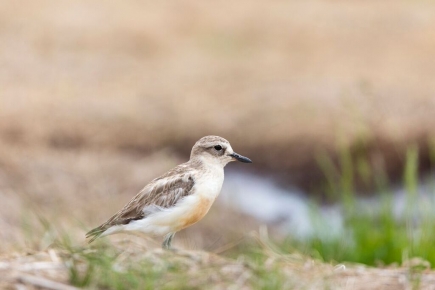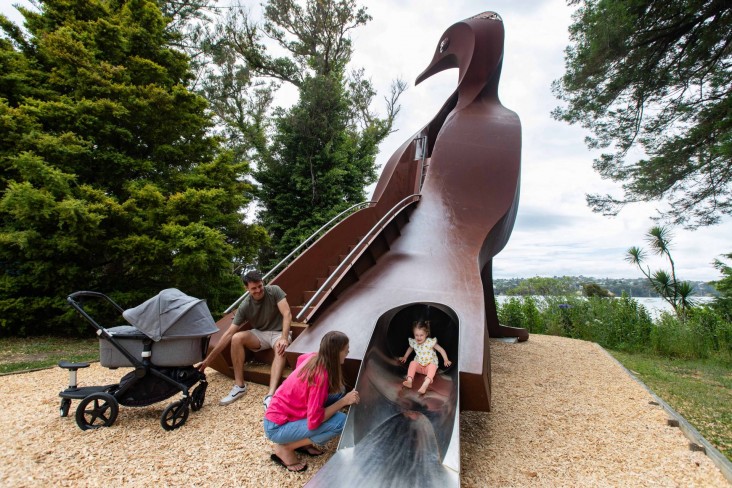
A pair of endangered New Zealand dotterels have set up home in the middle of a construction site. Like many couples that move into the area they clearly thought Hobsonville Point the place to start a family. When the birds were discovered they had a clutch of eggs in the nest.
Back in October, HLC Project Manager (Civil), Nirav Patel had just had the site scraped back and prepared to hand over to the builders when a contractor chanced upon the nest. Nirav contacted DOC for advice. Since then Biosecurity Officer, Art Polkanov, has been monitoring the birds.
"You might think a construction site is not a comfortable place to live," says Art, "but the dotterels have the opposite opinion. Firstly, they love this combination of flat land and a little bit of wetland. Secondly, it's a very good view. No humans or predators can approach unnoticed."
Relative to other environments, the threat from natural predators is low, says Art. The birds are protected from dogs by the construction fencing around the site and the number of cats roaming Hobsonville Point is much lower than in an established neighbourhood.
As far as threats go, that leaves us, and 45-tonne excavators. Out of those two, it's us that bothers the dotterels more. Art says the birds have evolved to equate the scissor movement of walking – whether it be by a two or four-legged animal – with danger. A giant piece of earth-moving equipment rolling by, as long as it's more than a couple of metres away, does not phase them much.
Art is keen to stress that finding an endangered species on your construction site does not need to mean a halt to works. "It's always site specific, but we can find a solution so that you don't have to interrupt work." When drilling was carried out on the Hobsonville Point site recently Art was able to advise the contractors how to proceed without disrupting the birds.
If you get too close to a dotterel's nest the birds will often perform a 'broken wing display'. They hop around you with one wing askew to appear weak and vulnerable and lure you away from the nest site. "When you follow the bird with the broken wing for, lets say fifty metres," says Art, "they suddenly recover and lift off vertically."
Dotterels used to be very widespread but have been reduced to around 2500-2700 individual birds nationwide as humans have encroached on their habitat. The Northern subspecies are usually found on or near the coast. In areas where there are no DOC management programmes, numbers are declining. The good news is that where programmes exist, numbers are growing.
Natural events also cause the destruction of habitat and disruption of breeding. Several years ago several pairs from Stillwater lost their sandspit to flooding. Their choice of new home was the bare grassland earmarked to become the Albany Mega Centre. Those dotterels – they can live to around 30 years of age – are still there. "Their habitat at Albany is still shrinking but they manage to breed and raise chicks," says Art.
Our own pair, the subjects of this story, lost their first clutch of eggs when Oystercatchers forced them to abandon their nest, so their current clutch is the second hatched on this site.
"It has been satisfying working with DOC," says Nirav. "By getting them involved early and coming up with a plan together we've been able to get some time-sensitive work done around the birds, under DOC's guidance. It's nice to know we're doing the right thing."
Building will begin on the land in late January by which time the birds time will have hatched and raised their chicks beyond the age they would typically leave the nesting site.






